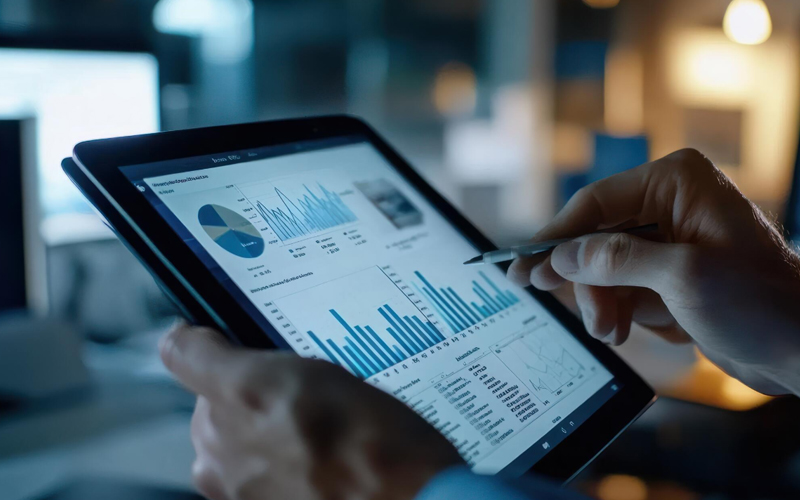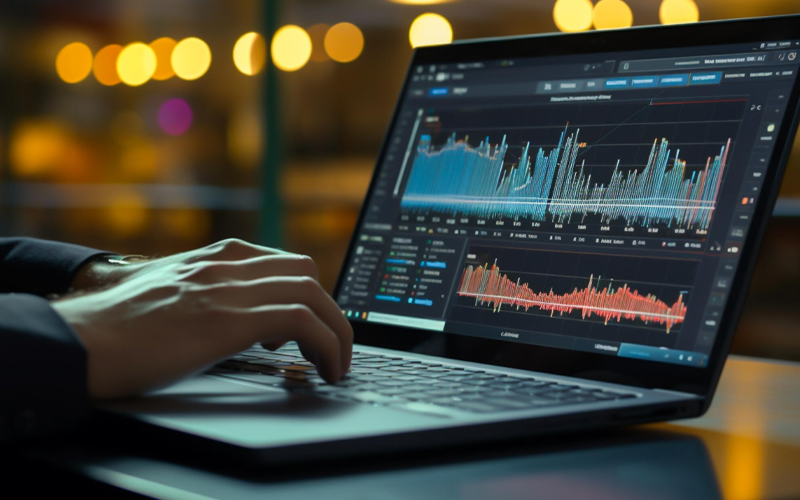Market research shows that at least 58% and 37% of businesses prefer cloud-based accounting and on-premises accounting, respectively. And the number of businesses doing on-premises accounting is dropping fast. 52% of decision-makers share that adopting accounting software reduced their error rate.
A record-to-report automation (R2R) process helps managers and stakeholders make imperative decisions from overwhelming accounting data.
This article will explain the R2R process definition, automation opportunities in finance, and ways to maximise the ROI.
What is the record-to-report process?
The R2R process is crucial for financial management. It is important for closing the books and keeping the integrity of the financial records. It includes collecting, analysing, and delivering accurate information for a clear view of a business’s financial health.
The management uses R2R reports for strategic and operational feedback that helps improve the financial standing. Common KPIs that the (R2R) record-to-report process tracks are –
- Profit and loss exposure.
- Time to close.
- Process cost.
- Close quality.
Automation in accounting and finance with Record to Report Software
If your accounting team is overburdened with routine, repetitive, and low-value tasks, your business can face a high cycle time for reporting and closing accounts. Significant manual reconciliation, high data maintenance, and lack of effective reporting can add to the woes further. By integrating record to report software into your system, you can automate key processes and reduce the risk of human error, significantly improving the overall efficiency of your accounting team.
In accounting and finance, the integration of robotic process automation (RPA) with cognitive technologies such as computer vision and optical character recognition (OCR) is what enables automation. These technologies are used to extract vendor and transactional data from financial documents such as invoices and credit notes. Additionally, machine learning (ML) is employed to facilitate advanced budgeting and forecasting.
Natural language processing (NLP) extracts data and entities from contracts and classifies email enquiries for unparalleled efficiency, agility, and scalability. These technologies provide a greater value in the Record to Report automation function.
Adoption of intelligent Record to Report automation for Global Businesses
Surveys show that the industry has automated only 70% of its finance and accounting. But end-to-end automating record to report software can bring greater efficiency and insight at a lower cost.
Technology adoption in R2R is becoming easier with the following value additions –
Saving time and working smart
Technology in R2R, especially record to report software, saves your employees’ time from doing repetitive tasks such as data entry, report generation, reconciliation, and aggregation. The employees can work on analysis and strategy that adds more value to the accounting function.
Powerful insights
High visibility of KPIs across end-to-end processes gives the top executives the right information at the right time. This helps in sharp decision-making.
Compliance and governance
Standardised and intelligent workflows automate audit trails and financial reporting. This helps internal and external auditors ensure compliance, accurate reporting, and efficient governance.
Role of Technology in Record to Report (R2R) Process
Technology directly impacts the following function within the R2R process, thus making it faster and more accurate –
-
Reconciliation and Financial Close
Traditionally, businesses have relied on manual reconciliation, which validates general ledger data against the source systems. Advanced bots access and compare the general ledger and sub-ledger data, identify any mismatches and adjust entries before uploading the data back into the ERP and financial systems.
-
Planning , Analysis, and Financial Consolidation and analysis
Bots access financial information across systems and structure it in a way that assists in better budgeting, forecasting, and reporting. They aggregate and format data, do standard calculations, create the first draft of the budgets and reports, and analyse variance.
-
Accounting and Balance Sheet Management
Automate complex reconciliations in trial balance calculations and post to general ledger accounts. Bots normalise data, calculate a trial balance, log into the ERP system, opens an account in each ledger, and pass adjusting entries. They also post the trial balance in the right ledger account.
-
Compliance and reporting in Record to Report
Bots can easily take over manual controls, validation, and reporting to ensure accuracy and compliance. They establish audit trails and ensure documentation for audits and regulatory authorities.
Maximising the ROI with Technology in Record to Report (R2R) Process
According to a leading consulting and strategy-building agency, digital R2R can reduce the closing and reporting time in accounts by up to 50%. Compared to median-performance companies, top-quartile businesses see 45% higher savings in personnel costs due to digital R2R. By leveraging record to report software, businesses can maximize ROI by reducing manual tasks and increasing the accuracy of financial data But how do you jumpstart the transition to a more efficient accounting process? Here are three simple steps –
- Step 1 – Create a culture of using digital technologies within the company to improve the record to report process. Use the power of bots to automate mundane tasks and encourage employees to take up high-value activities using a ‘cobot’ approach where bots and humans work alongside.
- Step 2 – Leverage the full potential of technology in R2R, including RPA, ML, NLP, AI, and analytics. Have an agile fail-fast approach to quickly change course when necessary.
- Step 3 – Have a bottom-up approach by establishing a Center of Excellence (COE) which reskills employees in automation technologies.
For organisations on the digital transformation journey, agility is key in responding to a rapidly changing technology and business landscape. Now more than ever, it is crucial to deliver and exceed on organisational expectations with a robust digital mindset backed by innovation. Enabling businesses to sense, learn, respond, and evolve like a living organism, will be imperative for business excellence going forward. A comprehensive, yet modular suite of services is doing exactly that. Equipping organisations with intuitive decision-making automatically at scale, actionable insights based on real-time solutions, anytime/anywhere experience, and in-depth data visibility across functions leading to hyper-productivity, Live Enterprise is building connected organisations that are innovating collaboratively for the future.
How can Infosys BPM help with Record to Report Solutions?
Infosys BPM proprietary technologies, analytics, and domain expertise lets you leverage (R2R) record to report software solutions that give you the following benefits – improved financial statements and streamlined business processes
- Up to 45% better efficiency.
- Faster month-end closing of accounts.
- Moving towards continuous accounting.
Read more about the record-to-report solution at Infosys BPM.









